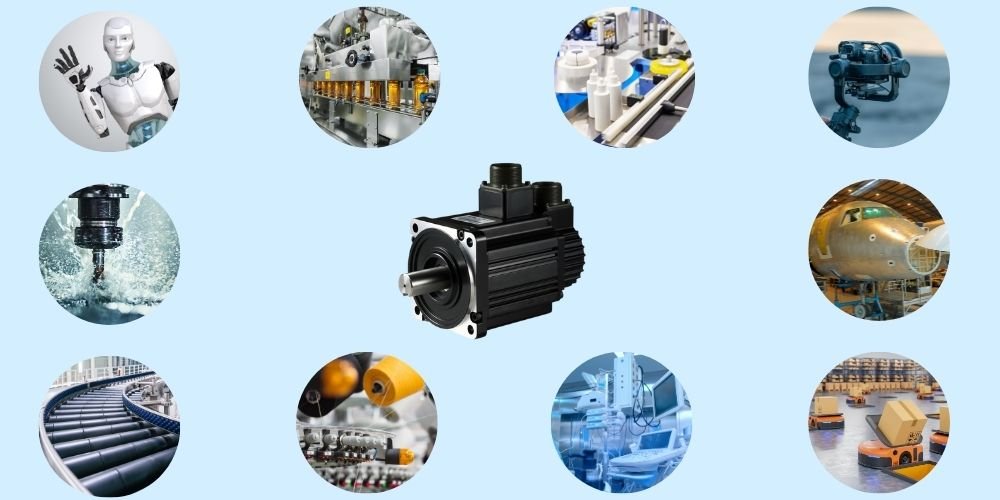Top 10 Servo Motor Applications: Where Precision Meets Performance
Servo motors are the driving force behind countless automated systems across industries. Known for their precision, speed control, and responsiveness, these motors are used wherever accurate movement is essential. From robotic arms to CNC machines, servo motors play a critical role in modern automation. Let’s explore the most common and high-impact applications of servo motors, with context on how they function in each. Description: Use cases: Description: Use cases: Description: Use cases: Description: Use cases: Description: Use cases: Description: Use cases: Description: Use cases: Description: Use cases: Description: Use cases: Description: Use cases: Servo motors are everywhere precision is needed. Their ability to offer accurate control over speed, position, and torque makes them vital to modern automation. Whether it's the arms of a robot, the belt of a packaging line, or the mechanism inside a surgical tool, servo motors deliver consistent, intelligent motion that drives productivity forward.1. Robotics
Servo motors are essential in robotic systems, providing smooth and accurate motion for joints and actuators. They help robots perform complex tasks such as gripping, lifting, rotating, or assembling with repeatable accuracy. The feedback loop allows for real-time position correction, making robots agile and responsive.2. CNC Machines
CNC (Computer Numerical Control) machines rely on servo motors for precise tool movement along multiple axes (X, Y, Z). Whether it's cutting metal, milling, engraving, or 3D printing, servo motors ensure each movement is accurate to the micron level.3. Conveyor Systems
In conveyor systems, servo motors control the speed and position of items moving down production lines. This helps in synchronizing with packaging machines, labeling systems, or sorters, ensuring zero disruption and high efficiency.4. Textile Machinery
Textile manufacturing requires fine control over thread movement, cutting, and pattern placement. Servo motors deliver this precision, maintaining consistent tension and alignment even at high speeds.5. Medical Equipment
Servo motors are used in medical devices that need controlled, smooth, and silent movement. Their accuracy and low vibration make them ideal for delicate applications like diagnostics, scanning, and robotic surgery.6. Automated Guided Vehicles (AGVs)
AGVs and AMRs (Autonomous Mobile Robots) rely on servo motors for both drive control and steering. These motors provide the precise, variable-speed control needed for intelligent navigation in warehouses and factories.7. Aerospace & Defense
In aircraft and military applications, servo motors are used in control surfaces, radar systems, and missile guidance units. Their high torque and responsiveness ensure stable and controlled actuation under extreme conditions.8. Camera Systems and Gimbals
Servo motors are used to stabilize and position cameras, allowing for smooth panning, tilting, and zooming. They help in both handheld and drone-mounted camera systems by adjusting the position with minimal delay.9. Printing and Labeling Machines
In high-speed printing, servo motors control roller speed, print head positioning, and label feed systems. This results in consistent print quality and minimal waste.10. Food and Beverage Industry
From bottle filling to precision cutting, the food industry uses servo motors for hygiene-compliant and precise movement. They help reduce downtime, waste, and contamination risks.Final Thoughts

